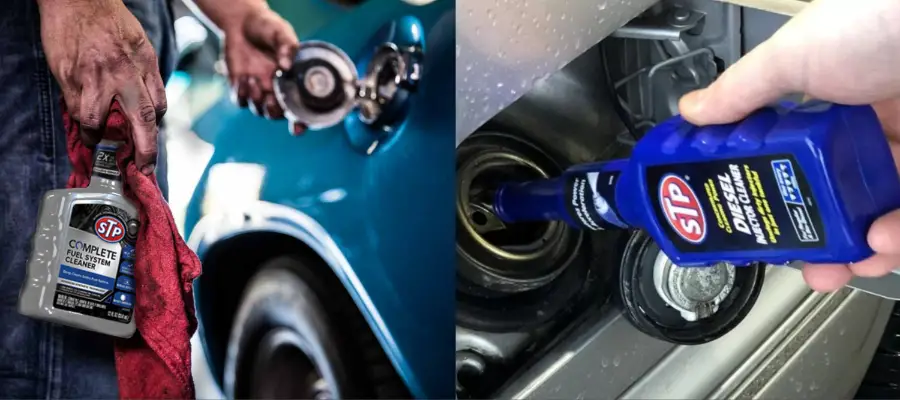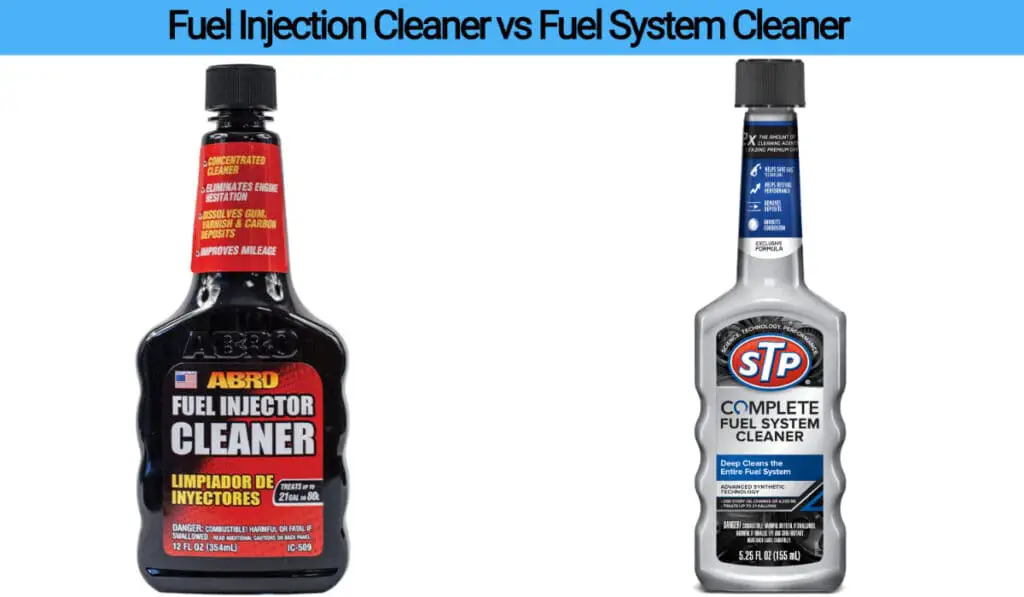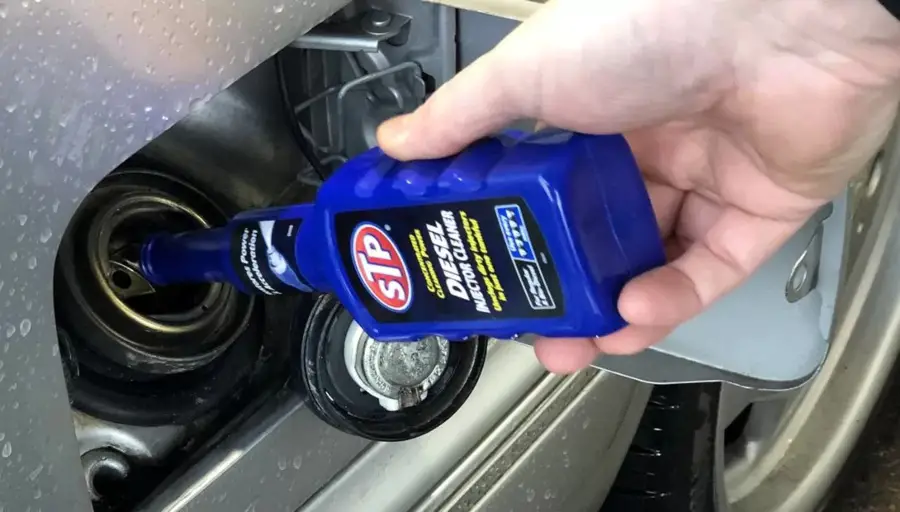
Car owners would often confuse fuel injection cleaners with fuel system cleaners. They do perform very similar functions, after all. But using the wrong cleaner may produce undesirable effects on your vehicle, and I know you’d want to avoid that.
Fuel injection and fuel system cleaners remove unwanted debris from your car’s components. The fuel injector cleaner is mainly used for valves, fuel lines, and the injector, while the fuel system cleaner cleans the entire fuel tank or system.
We will begin by discussing the similarities between the two and delve into the differences afterward. I will also discuss how their different chemical makeup suits them for different functions. Lastly, I will discuss the effectiveness of cleaners overall!
Are Fuel Injection Cleaners and System Cleaners the Same?

Both fuel injection and system cleaners are liquid additives that you insert into your engine pipes to rid the fuel passage of any unwanted deposits.
If the buildup becomes too much, sensitive components of your vehicle may be damaged, which leads to problems and error codes such as this one.
The cleaners also allow for fuel conditioning which happens when the fuel temperature, pressure, and viscosity are altered to meet what the engine needs.
Among the primary differences between the two cleaners is that injection cleaners are solvent-based while system cleaners are detergent-based.
Solvent-Based Cleaners vs. Detergent-Based Cleaners
As such, fuel injection cleaners work by dissolving all the contaminants it encounters in the fuel.
This makes them a lot more aggressive than detergent cleaners which work by simply carrying the contaminants away from the pipes.
Since these contaminants do not at all mix with the detergent-based cleaner, they flow with the detergent onto the pipe exit.
This happens when the detergent surrounds the contaminant, forming a bridge. This doesn’t mean, however, that detergent-based cleaners are less effective than solvent cleaners.
Manufacturers would often modify the chemical makeup of detergent-based cleaners to match the solvent cleaners’ aggressiveness.
Fuel Injection Cleaner vs. Fuel System Cleaner: Ingredients
While both types of cleaners share the same ingredients for they share the same function, they do have standout ingredients that set them apart.
The fuel injection cleaner, despite being solvent-based, is actually the weaker cleaner. This is due to how the solvent components are integrated into the formulation. Injection cleaners use light solvents, while system cleaners use heavy detergents.
As such, the integration of detergents makes the system cleaner the stronger cleaner overall.
The primary ingredients for the fuel injection cleaner are polyisobutylene (PIB), polyisobutylene amine (PIBA), and polyether amine (PEA).
Fuel Injection Cleaners Contain PIB, PIBA, and PEA
The primary role of PIB is to prevent the formation of soot, sludge, and other harmful deposits in the car’s engine. Essentially, it performs more of a preventative function. PIB has a hydrocarbon tail that enables it to be soluble in gasoline.
It is often mixed with a nitrogen compound called an amine that prevents water, small metals, and dirt from clumping on the fuel.
PEA, which I will discuss more on later, is added to improve fuel performance and ensure efficiency.
Fuel System Cleaners Contain Xylene
Meanwhile, the fuel system cleaner has its own set of ingredients. First is the chemical compound xylene, which increases your engine’s octane rating. This rating measures how much fuel can be compressed within the combustion chambers before exploding.
Another thing about xylene is that it softens the effect of alcohol on your components. Alcohol is a very drying solution, and it tends to dry out the rubber components in the engine. This makes it prone to cracking, brittleness and even leaking, which can be extremely dangerous.
Fuel System Cleaners Contain Naphthalene
Furthermore, system cleaners would often contain naphthalene. Yes, it’s the same compound found in mothballs. In fact, for decades, car enthusiasts often used mothballs as a form of octane booster for their vehicles!
Don’t add mothballs to your engines, though; there are some other chemical components thrown into mothballs that may harm your engine. In system cleaners, naphthalene reduces engine deposits, increasing fuel performance.
Fuel System Cleaners Contain Hydrotreated Distillates
Finally, hydrotreated distillates are added to fuel system cleaners to protect the chemical composition of the system cleaner from changes.
In the process of mixing with the fuel and under such high temperatures, the chemical makeup will be prone to change. Hydrotreated distillates prevent that and ensure the performance of the cleaner is maintained.
The fuel injector and fuel system cleaners have other components thrown into the mix. Brands would try to make their products stand out by adding other compounds. But it is expected that you will generally see the ingredients mentioned above in almost all cleaners.
Use Fuel Injector Cleaners for Light Cleaning

Using a fuel injector cleaner on your first cleaning round would be advisable if you’ve just gotten your vehicle.
Do note that fuel injector cleaners specialize in cleaning the injectors, valves, and injector pipelines. If you feel most of the unwanted buildup is on these parts, go for the injector cleaner.
Additionally, fuel injector cleaners work immediately when you place them on the injector. It contains efficient chemical components that mix very well with the fuel, after all.
Fuel injector cleaners are also specially made for fuel injector engines. Many modern vehicles have this engine, so keep that in mind when choosing your cleaner.
Use Fuel System Cleaners for Heavy Cleaning
The fuel system cleaner, meanwhile, cleans the entire tank or system. As mentioned above, this product is a lot more aggressive.
If your last trip to the mechanic was quite some time ago, or if you’ve added a lot of mileage to your vehicle since then, you may be better off with a system cleaner.
However, a downside to the system cleaner is that it doesn’t mix as well with the fuel. This is why you may have to wait around 10 to 15 minutes before the product starts working. You can actually start your car and go for a drive while the fuel system cleaner does its magic.
Although you can use the system cleaner for fuel injector engines, the system cleaner is better used for carburetor engines, which you can find in older vehicles.
Assessing the Effectivity of Cleaners
Many injectors and sometimes system cleaners use the compound polyether amine, which breaks down the bonds of carbon deposits and oil in the pipes and the combustion chamber.
Once the deposits have become soluble, they will flow with the fuel onto the exhaust valve or the exit pipe.
The process begins when you insert the fuel additive, which has PEA, through the inlet and into the injector. PEA can do this because it doesn’t break down even when the temperatures within the components are super high.
PEA-Cleaners Reduce Carbon Deposits
True enough, a study was able to prove that PEA cleaners do indeed reduce carbon deposits. Before the test, a chosen engine was driven and intentionally made dirty for about 50 hours. Then, the engines were cleaned with the cleaner product for another 50 hours.
The test showed that the weight of the carbon deposit reduced to 62 milligrams from 222 milligrams, or a decrease of 72%.
Another study focusing on the effects of fuel additives on the microstructure of combustion engine deposits injected two vehicles, one with base gasoline and one with PEA-infused gasoline. The PEA-infused gasoline demonstrated a 73% reduction in the deposits on the intake valve.
Valve Deposits Would Often Travel to Cylinder Heads
However, the same study also documented a 21% increase in the deposit weight on the cylinder heads.
So it’s highly possible that some brands may only be transferring the deposits and not necessarily taking them out of the engine. The study did not explain the reason for the increase, but it’s highly plausible that it came from the intake valve.
A study also analyzed the effect of cleaners on an engine with a new valve intake and new cylinder heads. Surprisingly, the study showed that the base gasoline produced the least deposit on both the cylinder heads and the valve intake.
Out of the many cleaner variants tested, the PEA cleaner demonstrated the lowest number of deposits. But this is still more than the base gasoline’s. It may be concluded then from the findings of these studies that cleaners may not be necessary if your engine is still new.
High-Quality Gasoline Is Better for Newer Vehicles
For newer vehicles, as long as you use high-quality gasoline, you should be fine. Castrol’s GTX, for example, already has detergents in its chemical composition, which reduces the need for you to get cleaners.
But, if your car has high mileage and is already old, it may be necessary to get a fuel injector or fuel system cleaners, for these actually specialize in getting rid of deposits.
Both cleaners work, but the usage depends on how used your vehicle is.
Conclusion
Fuel injection and system cleaners have the same function but are better suited for different engine components and types. This is due to them having different chemical compounds in their formulation.
Although the two can sometimes be used interchangeably, it’s still better to make the best choices for your car by knowing what you inject into the engine!
